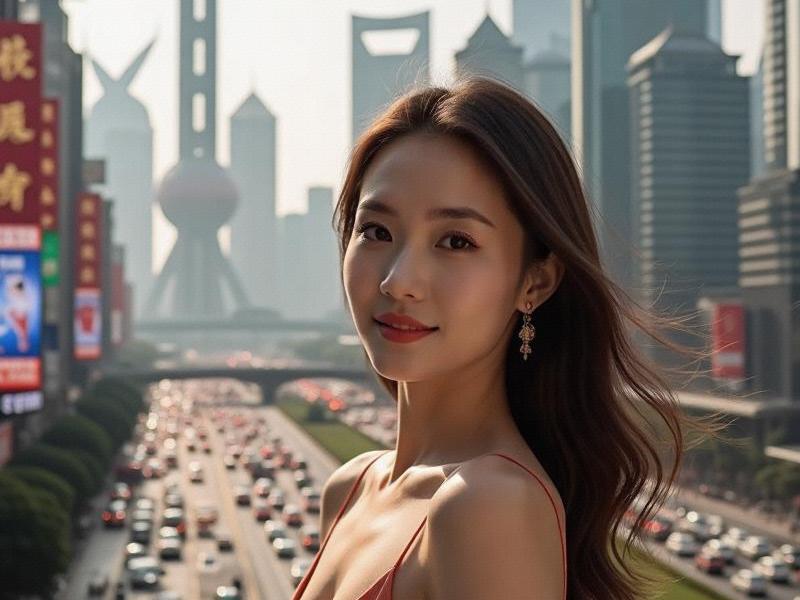"Concrete Jungles and Courtyard Dreams: Shanghai's Urban Development Paradox"
⏱ 2025-06-19 00:30 🔖 阿拉爱上海
📢0℃

The Shanghai skyline tells competing stories - the futuristic spires of Pudong's financial district pierce clouds while low-slung shikumen lanes hug the earth in the former French Concession. This visual tension represents the central paradox of modern Shanghai: how to build Asia's most technologically advanced megacity without erasing the human-scale communities that give it soul.
Key development indicators:
• 63 new skyscrapers (200m+) completed since 2020
• 42% increase in protected historic districts
• 38 hybrid "vertical village" projects underway
• 71% public approval rating for urban planning
阿拉爱上海 Three innovative solutions have emerged:
1) The "Needle and Thread" Approach
- Ultra-dense commercial cores (Lujiazui 2.0 expansion)
- Connected by green corridors (Huangpu Riverwalk)
- Anchored by preserved neighborhoods (Tianzifang model)
上海龙凤419油压论坛 2) Heritage Adaptive Reuse
- Power stations becoming art museums (PSA)
- Factories transformed into creative parks (M50)
- Traditional courtyards updated as co-living spaces
3) Climate-Conscious Construction
- Wind tunnel-tested supertall designs
上海贵族宝贝龙凤楼 - District cooling systems
- Sponge city flood mitigation
- Vertical farming integration
As urban planner Dr. Wei Zhang explains while overlooking the city from Shanghai Tower: "We're not choosing between memory and progress - we're engineering their coexistence. The Shanghai Model proves hyper-density can enhance rather than erase urban character."
With the upcoming "Five New Cities" satellite development plan and the Huangpu Cultural Belt initiative, Shanghai continues to redefine what sustainable megacity growth looks like in the 21st century.
end
Shanghai's Beauty: A Blend of Tradition and ModernityQuantum Bund: Shanghai's Chrono-Urban Matrix Rewriting Civilization's Source Code"The Yangtze Delta Experiment: How Shanghai and Its Satellite Cities Are Rewriting Urbanization Rules"The Evolution of Shanghai's Nightlife: How Entertainment Venues Are Redefining Urban LeisureShanghai's Nightlife Revolution: How Entertainment Clubs Are Shaping Urban Culture in 2025Neon Cheongsams: How Shanghai's Women Are Rewriting the Rules of Asian FemininityShanghai Beauties: A Journey Through the City's Elegant CharmShanghai and Its Surrounding Areas Sightseeing GuideShanghai and Its Satellite Cities: The Making of a 21st Century MegalopolisShanghai Entertainment Hotspots: A Vibrant Melting Pot of Culture and Fun
Shanghai 2025: The Radiant Core of the Yangtze River Delta MegaregionShanghai Glamour: How the City's Women Are Defining 21st Century Chinese FemininityNeon Dynasty: How Shanghai's Entertainment Clubs Are Redefining Global Nightlife Standards in 2025Midnight in Shanghai: How China's Glittering Metropolis Redefines Nightlife LuxuryShanghai's Sphere of Influence: How the Megacity is Reshaping Eastern ChinaThe Yangtze Delta Megaregion: How Shanghai and Its Neighbors Are Redefining Urban EconomicsThe Velvet Rope Economy: Inside Shanghai's Exclusive Entertainment Club SceneGilded Playgrounds: How Shanghai's Elite Entertainment Clubs Are Redefining Urban NightlifeThe Shanghai Nexus: How China's Financial Capital is Reshaping the Yangtze River Delta MegaregionShanghai 2025: The Silicon Valley of the East Reinvents Urban Living

